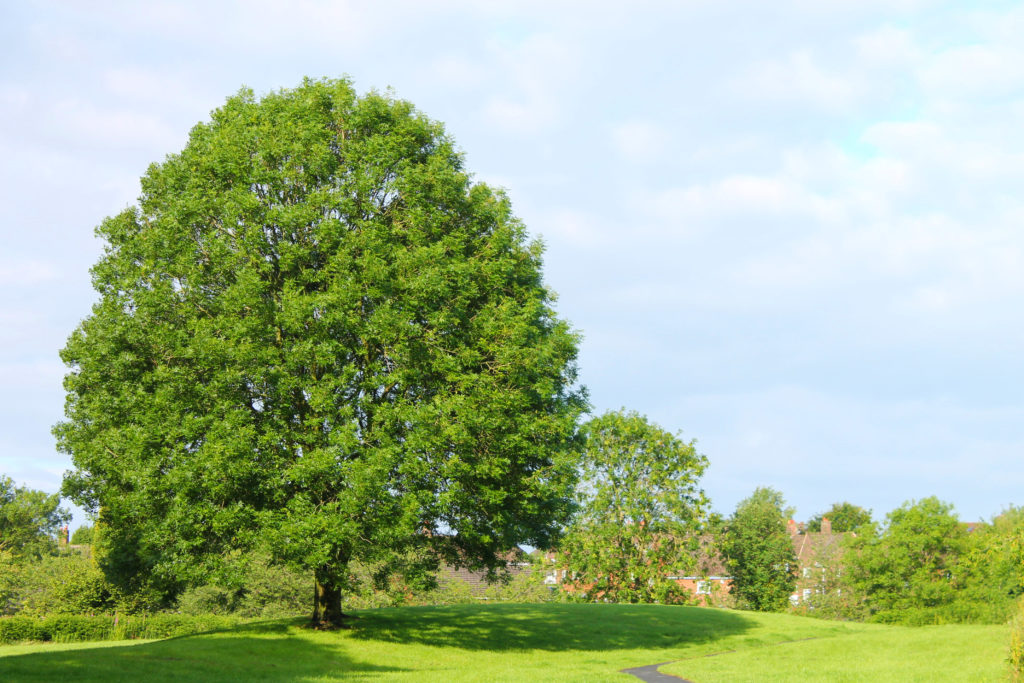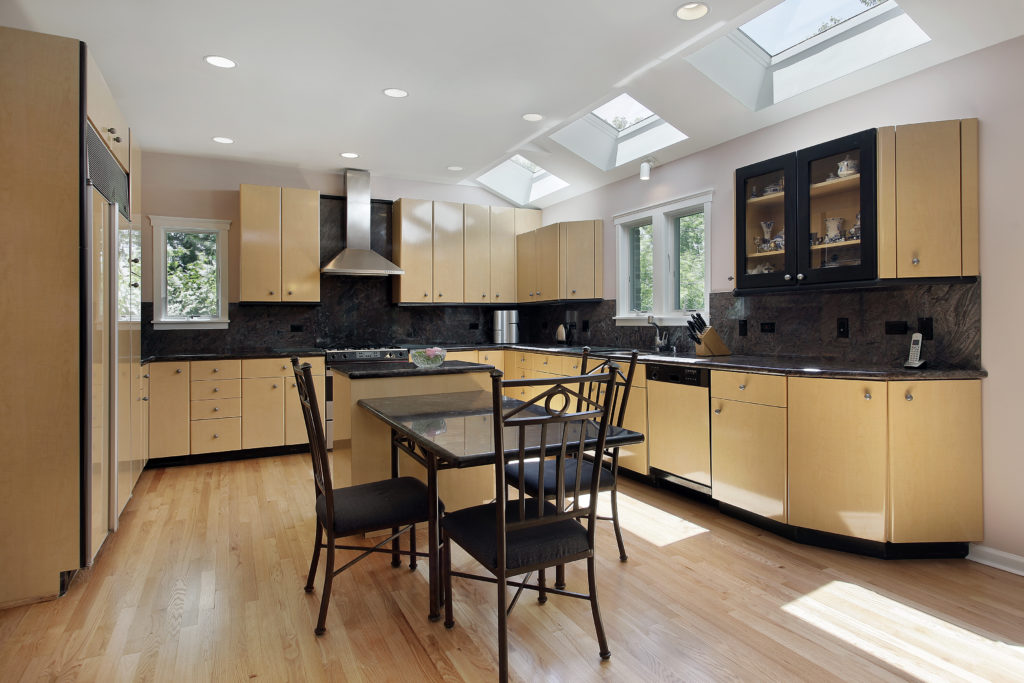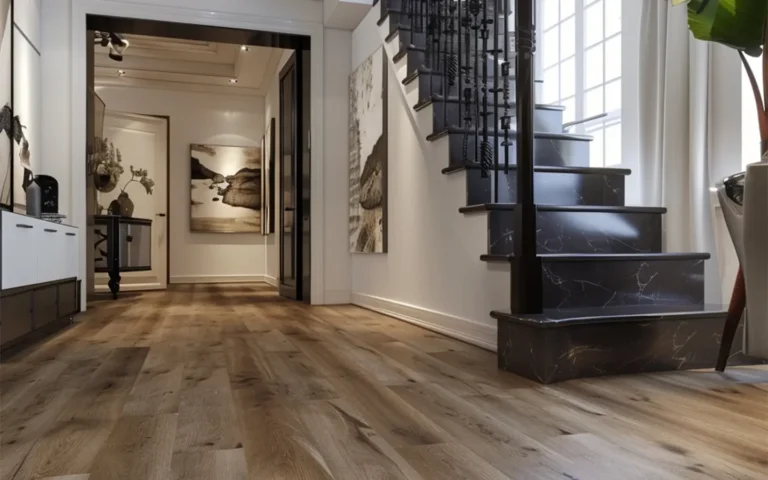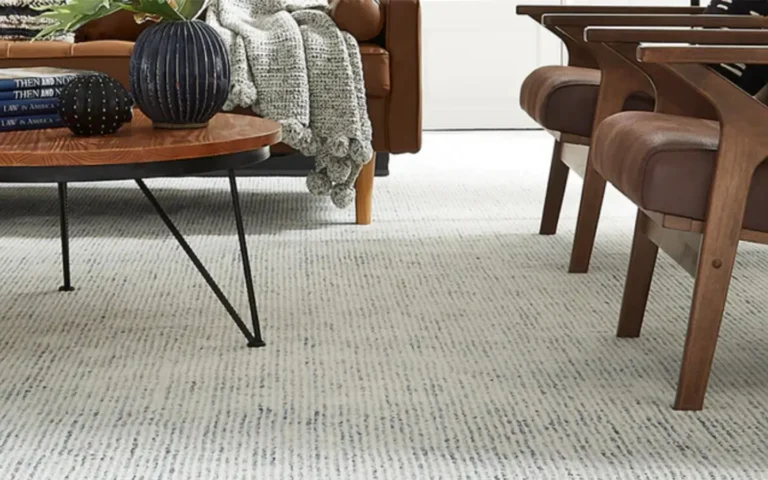This post may contain references or links to products from one or more partners of our parent company and/or subsidiaries of our parent company. For more information, visit this page.
September 14, 2020
Thinking about putting Ash flooring in your home? We don’t blame you!
Everyone knows that hardwood floors are an amazing investment. They’re timeless, gorgeous, and they look incredible. Plus, hardwood floors like Ash can increase your home’s resale value like crazy.
But with so many types of wood flooring on the market, Ash wood tends to get passed over for more common choices like Oak. And we think that’s crummy!
Ash flooring is perfect for so many homes. It’s durable, it’s beautiful, and it’s great for contemporary looks. That’s why below, we’ll answer all of your questions about Ash wood flooring. We’ll talk about its durability, its price, how to install it, and even some Ash flooring pros and cons you should know about.
What Is Ash Wood Flooring, Exactly?

Let’s start off with the basics. When we talk about Ash flooring, we’re usually talking specifically about White Ash. White Ash trees are native to parts of Europe and North America, and are commonly found in the northeast of the United States. Ash wood is used in millwork, flooring, tools, and sporting equipment (like baseball bats) around the world.
How Durable Is Ash Wood? What’s Ash’s Janka Rating?
Ash is a very durable hardwood species. If you don’t know this already, durability in wood is measured on something called the Janka hardness scale. And while the most durable types of wood flooring can rank all the way up to 3500 and beyond, Oak is the industry standard for hardwoods at a respectable 1300 or so.
Which is harder: Ash or Oak?
The average Janka rating for Ash flooring is 1320—which puts it directly between Red Oak (1290) and White Oak (1360). This means it can handle a high volume of foot traffic and wear, so it’s great for houses with kids and animals running around.
Which is harder: Ash or Walnut?
If we’re talking about American Walnut (the most common type in the US), then Ash wood is the more durable choice. American Walnut wood has an average Janka rating of 1010 to Ash wood’s 1320.
Translation: if you’re looking for a more scratch-resistant flooring choice, Ash is the better bet. If you’re deciding between something like carpet or hardwood in the bedroom, however, Walnut may be the more comfy option because it’s a bit softer. And if you’re looking for something much softer, you could consider Pine flooring or something similar.
Best Brands of 2024
What Color is Ash flooring?
If you were to browse the spectrum of wood floor colors—from near-white Maple to the deep black of Ebony flooring—you’d find Ash to be in the lighter, more neutral tones. But that doesn’t mean it’s boring!
In fact, Ash flooring can range all the way from creamy blonde to deep brown, with gorgeous color variations and swirls. It’s most commonly found in grey-brown hues, but like we said—it has tons of character.
Can You Buy Prefinished Ash Floors? What About Unfinished Ash Flooring?
Yep! Both prefinished Ash and unfinished Ash are available from a number of different flooring manufacturers. Check out a few of those products here—and as always, you can always find a flooring store near you to see even more products!
What Does Ash Wood’s Grain Look Like?

As we mentioned, Ash flooring makes a subtle-but-gorgeous statement with its swirling-yet-straight wood grain. The shape of that swirl is similar to Oak’s, but it’s a little less reddish (and more vertical).
It’s perfect for giving the wood some character, but not drawing too much attention. Think of its grain pattern like a perfect medium between Oak and Maple.
Why Is Ash Flooring So Much Less Common Than Oak or Other Domestic Hardwoods?
That’s a great question! Ash is growing in popularity as lighter floors are becoming more and more trendy, but it still isn’t as common as some other hardwood flooring types.
One of the main reasons: with an invasive beetle called the Emerald Ash Borer decimating Ash populations, it’s becoming harder and harder to buy old-growth Ash trees. And that means it’s harder and harder to find the large planks so popular in today’s hardwood flooring.
Luckily, scientists are hard at work finding a cure for this invasive pest. And with color palates changing, it probably won’t be long before Ash flooring is back in the mainstream.
Installing Ash Flooring: What You Need to Know
As with all other types of wood flooring, there are certain unique considerations to take into account when installing Ash floors. Here’s what you should know.
Can Ash be installed as a floating floor?
Yes! We’ll cover this in more detail below, but Ash wood can absolutely be installed as a floating floor. One of the common disadvantages of floating floors is that they necessitate buying click-together flooring, which is almost always engineered (rather than solid) wood.
But, when it comes to Ash flooring, that doesn’t really matter as much, since wide- and long-format solid planks are rare anyway (for the reasons we mentioned above). And of course, floating floors make for some of the easiest flooring to install.
Can you find solid ash flooring? How do you install it?
Absolutely! And you don’t even need to hunt for the best hardwood floor brand to get it—solid Ash flooring is just as common as its engineered cousin.
And like with most solid wood floors, you can opt for a nail-down, staple-down, or glue-down installation. It all depends on your subfloor and underlayment. And if you’re wondering “what is subflooring?”, it’s just the base surface below your finished floor.
Do Ash floors need to acclimate prior to installation?
With any solid wood floor product, it’s critical to let the moisture content of the wood adjust to the conditions of the room it’s going to be installed in. Otherwise, you’re going to have a bad time (think warping and buckling). Make sure to let your solid Ash planks acclimate for about 72 hours before any installation takes place.
Engineered wood planks don’t need as much time to acclimate, but it’s still recommended that they be stored in the room they’ll be installed prior to doing so. There might be some engineered wood disadvantages out there, but it’s definitely a more forgiving product to work with.
How Do You Clean Ash Flooring?
Keeping your floor clear of dirt and wiping up any spills is the easiest way to keep Ash wood looking new. It’s important to have a soft broom on hand as well as a mop and spray cleaner.
Ash Flooring Prices: Material and Installation Costs
Let’s get to a big factor for most customers shopping for new flooring. What’s the price?
How much do the materials for an Ash floor cost?
A lot of factors go into pricing a brand new Ash floor. In most cases, engineered wood will be cheaper overall since it uses less actual Ash wood. But of course, there are various levels of quality when it comes to engineered wood—and the best of these can be more expensive than some solid options. It just depends!
That said, Ash flooring materials generally range from between $3 to $7 per square foot depending on color and quality.
How much does Ash flooring installation cost?
In general, the cost to install engineered hardwood floors is less than the cost to install solid hardwood floors. But again, it depends on the specific product and your location. That being said, professional engineered hardwood installation will typically fall somewhere between $3 and $8 per square foot.
And remember: these prices are most accurate when you’re starting from net zero. The cost to replace carpet with hardwood, for instance, will be a bit more expensive, since you have to pay to remove and dispose of the old carpeting as well as to install the new hardwood floor.
Is Ash cheaper than Oak flooring?
This is a question we hear all the time! And the answer is… sometimes. Again, it all depends on the specific product you choose. There are just so many different varieties, colors, and quality levels available in both of these types of wood flooring, it’s basically an apples-to-oranges comparison.
Are ultra-wide Ash wood planks going to be more expensive than wide Red Oak planks? Probably. Is the best engineered wood flooring with an Oak veneer going to cost more than mid-range solid Ash? Again, probably. It all depends!
Ash Hardwood Flooring Pros and Cons

We’ve thrown a lot of information at you, but we know that it can be a tad hard to digest. So to make things easier, we’ve put together this list of Ash flooring pros and cons.
If you’re trying to make a decision between buying Ash wood, a different wood flooring type, or even a hardwood floor alternative, we hope these pros and cons will help you out.
The Pros of Ash Flooring
Here are some of the incredible benefits of installing Ash wood in your home. Here are a few of them.
Ash wood is super durable
Ash isn’t just used for flooring! They use the same wood to make baseball bats and the handles for a variety of tools. Basically, Ash is made to take some hits—literally.
Translation: it’s a great choice for high-traffic areas of the home, and it’s some of the best wood flooring for dogs. Or kids, for that matter! And while you’d probably be better off going with a waterproof option (like Mohawk’s RevWood, for instance) if you’re thinking of revamping your mudroom flooring, Ash is strong enough to use in hallways, kitchens, and other rooms where floors can take a beating.
Its elasticity muffles sound for a quieter floor
Ash wood possesses a unique elasticity, making it a great choice for large open areas. Because it flexes and bends (there’s a reason baseball bats don’t shatter when they hit 100mph fastballs), Ash reduces the echoes of footsteps around the house. If you want a quieter floor, it’s a great option! Example: looking for sunroom flooring that’ll keep your solarium quiet and zen? Ash wood is an excellent choice.
The light, natural color of Ash flooring brightens up spaces
Along with its gorgeous grain, Ash wood has lighter undertones—meaning it can brighten up rooms that don’t get as much natural light. Meanwhile, its natural character keeps it from looking sterile like many other types of light wood flooring can (Maple, for example).
And its grain pattern is fantastic for contemporary designs
Because Ash wood doesn’t have the red and pink undertones of Oak flooring, it complements the grays hues that are becoming more and more popular in contemporary designs. It’s a perfect way to incorporate trendy color palettes into your space, and you can use it to create gorgeous wood floor patterns like herringbone and chevron parquet.
Ash wood is comparatively water-resistant
There’s no wood that’s completely waterproof (for that, you’d have to go with a specialty item like RevWood or a type of fake wood flooring). But it’s important to know that there are some comparatively water-resistant wood flooring choices out there.
Hardwoods, for instance, are more water-resistant than softwoods like because their fibers are packed together more tightly—meaning they absorb less water. And since Ash wood is one of the more durable hardwood choices, its water-resistant qualities are nothing to sneer at.
Of course, we wouldn’t recommend doing a wood floor bathroom with Ash. For that, we’d recommend teak flooring or something similar—but Ash flooring is great in kitchens, dining rooms, and other areas that see occasional spills.
Ash flooring comes in solid and engineered varieties
As we mentioned before, when it comes to Ash flooring, you have the option of buying solid or engineered planks. Obviously, different types of flooring exist to suit every need—and being able to choose between solid and engineered products gives you exponentially more options when it comes to price, installation methods, and everything in between.
…which means it can be installed as a floating floor
And because Ash comes in engineered varieties, it can often be installed as a floating floor. If you’re interested in DIY wood floors, this can make your life about a thousand times easier.
The staining potential with Ash wood is endless
Thanks to its lighter colors and subtle wood grain, Ash is easy to stain and can take on many different looks. Plus, it holds a stain super well, so you can customize it to fit any home!
And it’s easy to work with, too
Ash wood is very easy to work with. Thanks to its elasticity, it’s easy to bend. These characteristics make it one of the most popular choices for archery bows, and flooring installers love it because it maneuvers well with a saw and while fitting planks together.
Plus, it’s easy to clean!
Ash wood has the same day to day maintenance as most hardwood floor options. As often as necessary, it just needs a quick clean with a soft broom to remove any dirt or debris. For a more thorough cleaning, using a mop with a safe, natural spray-on cleaner will keep it looking great. Different finishes may have additional maintenance requirements, but preventative care is simple.
The Cons of Ash Flooring
Ash floors are great, but they do have a few drawbacks. Here are some disadvantages of Ash wood flooring to consider.
It can be hard to find long or wide Ash flooring planks
Larger planks come from old-growth Ash trees. And Ash trees are currently plagued by the Emerald Ash Borer, which (as we mentioned earlier) is currently demolishing the USA’s White Ash tree population. Scientists are working hard on a solution, but until that happens, most of the Ash planks you’re going to find will be from younger, smaller Ash trees.
Translation: if you’re looking for wide or long planks, you might have to opt for engineered wood—or ditch Ash entirely and go with Douglas Fir flooring instead. Douglas Fir is known for its beautiful, ultra-wide, ultra-long planks!
Ash floors aren’t as resistant to moths and termites as some other floors are
Ash wood isn’t as termite-proof or moth-proof as some other types of wood flooring are. If you live in a warmer climate (like the southern part of the United States), you’ll need to keep up with anti-pest treatments more regularly.
Ash wood isn’t the most sustainable option
If eco-friendly flooring is important to you, you may want to reconsider getting Ash floors. As we’ve discussed a few times already, these trees are endangered in the US. That doesn’t mean that buying Ash flooring is the end of the world, but it is something to be aware of.
The price of Ash can be a tad more expensive than other types of wood
Ash flooring doesn’t have as large of an inventory as Oak thanks to the Emerald Ash Borer problem, so it is usually more expensive. It is still an affordable hardwood option compared to exotic woods like Mahogany, but again—it’s something to be aware of.
So: Is Ash Flooring the Best Choice for You?
By now, we hope you’ve fallen in love with the idea of having beautiful Ash floors in your home. But if you’re still looking for other options to explore, we’d recommend taking a look at the articles below on different types of flooring. We promise you’ll find something you love!
And when you’re ready to check out some flooring materials in person, find a local flooring store in your area and check things out with your own eyes! After all, those stores are the real resource.
- A Guide to Peel-and-Stick Carpet Tiles (& 9 Reasons They’re Amazing)
- Carpet vs. Laminate: Which is Better for Bedrooms, Living Rooms, Etc?
- Pergo Extreme Reviews 2020: What Buyers are Saying
- Snap-Together Tile Flooring: Is It Right for You?
- Vinyl Plank and Beyond: The Best Vinyl Flooring Around
- Your 2020 Guide to Types of Tile
- Tile vs. Laminate Flooring: The Pros and Cons
- Engineered Bamboo Flooring: Pros and Cons
- Why Concrete Flooring That Looks Like Wood is So Darn Cool
About The Author

Steph Gregerson
September 14, 2020
Steph is a book nerd, rule follower, and pizza lover who can't get enough of playing outside. She was raised on the ice rinks of MN and currently resides in sunny San Diego. As a freelance writer, she loves research, producing content, and organizing information for a wide variety of clients. She currently has at least 10 browser windows open at all times.





